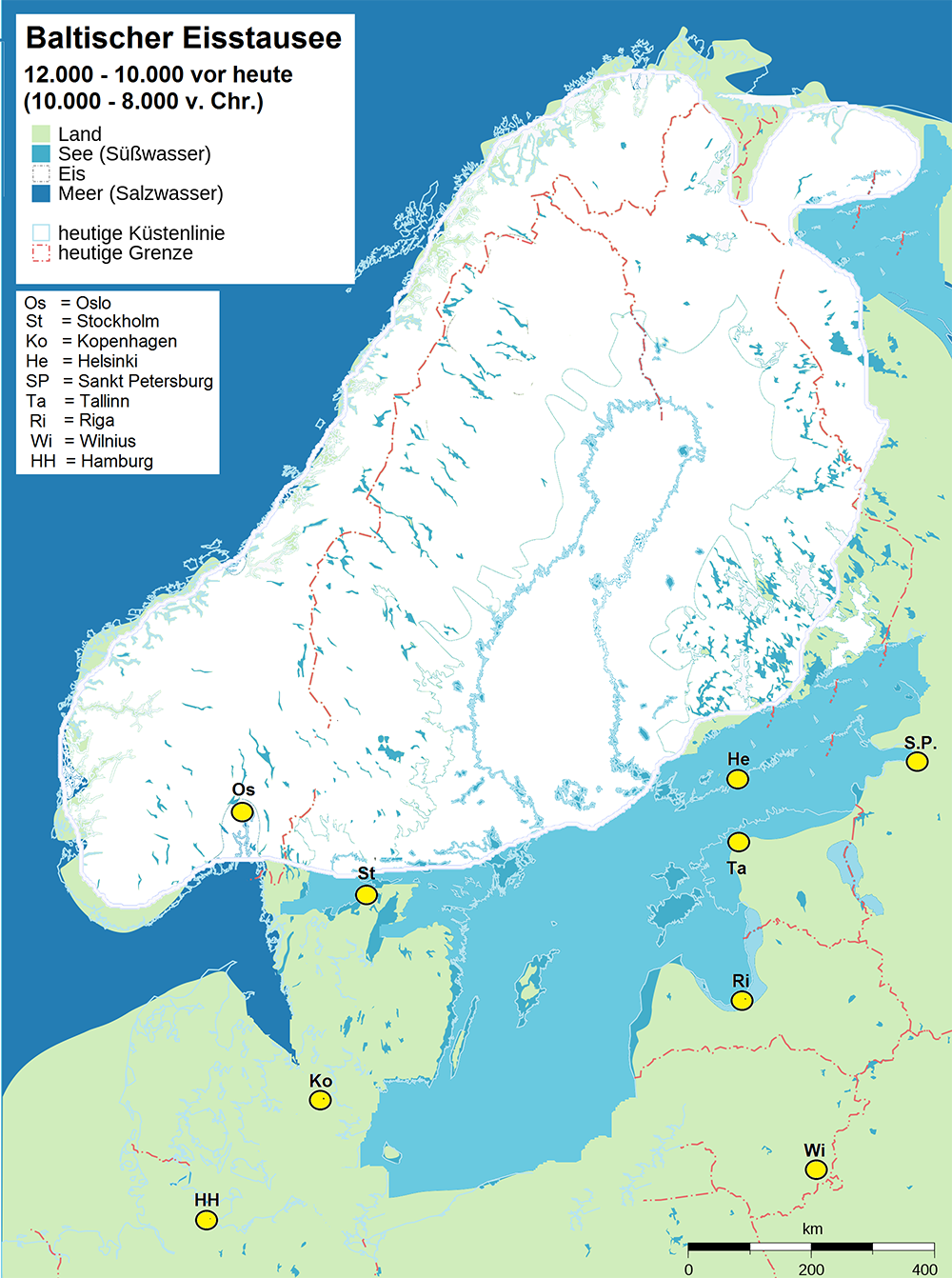Pontus Skoglund writes (and shares publicly) his perspective on early postglacial migrations of hunter-gatherers into Scandinavia, in Northwest Passage to Scandinavia (Nat. Ecol. Evol.): an initial migration from the south and a second coastal migration north of the Scandinavian ice sheet.
He sums up the recently published Open Access paper Population genomics of Mesolithic Scandinavia: Investigating early postglacial migration routes and high-latitude adaptation, by Günther, Malmström , Svensson, Omrak, et al. PLoS Biol (2018) 16(1): e2003703, based on preprint at BioRxiv Genomics of Mesolithic Scandinavia reveal colonization routes and high-latitude adaptation (2017).
Abstract:
Scandinavia was one of the last geographic areas in Europe to become habitable for humans after the Last Glacial Maximum (LGM). However, the routes and genetic composition of these postglacial migrants remain unclear. We sequenced the genomes, up to 57× coverage, of seven hunter-gatherers excavated across Scandinavia and dated from 9,500–6,000 years before present (BP). Surprisingly, among the Scandinavian Mesolithic individuals, the genetic data display an east–west genetic gradient that opposes the pattern seen in other parts of Mesolithic Europe. Our results suggest two different early postglacial migrations into Scandinavia: initially from the south, and later, from the northeast. The latter followed the ice-free Norwegian north Atlantic coast, along which novel and advanced pressure-blade stone-tool techniques may have spread. These two groups met and mixed in Scandinavia, creating a genetically diverse population, which shows patterns of genetic adaptation to high latitude environments. These potential adaptations include high frequencies of low pigmentation variants and a gene region associated with physical performance, which shows strong continuity into modern-day northern Europeans.
The ice sheet distribution – which did not improve nuch for thousands of years – was clearly the greatest barrier for potential migrations in the region.

See also:
- Ancient DNA samples from Mesolithic Scandinavia show east-west genetic gradient
- Corded Ware culture contacts in the Baltic Sea region linked to immigrant potters
- Coexistence of two different populations in Gotland during the Middle Neolithic
- The concept of “Outlier” in Human Ancestry (III): Late Neolithic samples from the Baltic region and origins of the Corded Ware culture
- Genetic prehistory of the Baltic Sea region and Y-DNA: Corded Ware and R1a-Z645, Bronze Age and N1c
- More evidence on the recent arrival of haplogroup N and gradual replacement of R1a lineages in North-Eastern Europe